
East of Paradise - Contemporary Vorarlberg Architecture
In comparison to us, Austria is smaller in area and population. Unlike our country, however, it offers several regions with a distinct architectural signature. While the Viennese academic scene far surpasses the original borders of the Austro-Hungarian monarchy with its international tone, attracting leading figures from Asia and America to teach, the capital of Styria saw the emergence of the so-called “Graz School” under the baton of Günther Domenig in the late 1960s, featuring an unmistakable deconstructivist appearance.
Currently, the most attention in Austria is drawn to the so-called “Neue Vorarlberger Bauschule,” which emerged at the turn of the century with the wave of critical regionalism. As the name suggests, rather than using the word 'architecture,' they employ the phrase 'building art,' stemming from a tradition rooted in the alpine environment. While the first generation was supported by strong personalities like Leopold Kaufmann, Hans Purin, and Erich Steinmayr, the current form of Vorarlberg architecture is defined by studios consistently represented by the duo of Baumschlager&Eberle, Dietrich|Untertrifaller, cukrowicz.nachbaur, or marte.marte.
The latter studio, led by the brother duo Bernhard Marte (*1966) and Stefan Marte (*1967), will come at the end of March to present their work at the Gallery of Contemporary Art and Architecture in České Budějovice. Both brothers received their education not far from their birthplace at the higher vocational school in Rankweil under Prof. Erich Steinmayr, a significant figure in the Vorarlberg architectural scene, and subsequently continued their studies at the Technical University in Innsbruck under Prof. Othmar Barth, a prominent representative of post-war Tyrolean modernism, and his assistant Rainer Köberl.
In 1993, the Marte brothers opened a joint studio in the two-thousand-person municipality of Weiler, located thirty kilometers south of Lake Constance. Stefan Marte has been the president of the Vorarlberg Architectural Institute since 2005, and Bernhard Marte has been a board member of the Vorarlberg Association of Architects since 2009. Their wide range of work encompasses family houses, sacred buildings, office buildings, and transportation constructions. All their realizations share a formal simplicity, while also featuring significant sculptural expression, which they prefer to project onto exposed concrete. Flat-roofed houses with massive concrete walls are not exactly typical for Vorarlberg. The fact that they have lived their entire lives in the Bregenz Forest does not limit their perspective. The brothers express admiration for the timelessness of American architect Louis Kahn and draw inspiration for working with light from Japanese minimalist Tadao Ando.
The openness of the entire region to external influences is evidenced by the fact that five kilometers from the Marte brothers' studio lies a new Islamic cemetery serving all of Vorarlberg, where more than eight percent of the population is Muslim. The author of this funerary structure is another outstanding local architect, Bernardo Bader, whose work also deserves to be presented to a Czech audience.
While much of the world is dealing with the outflow of population from rural areas to cities, village life in the Bregenz Forest continues to attract more and more people, reflected in a steady increase in population. Villages form self-sufficient units, community life utilizes the potential of local resources, and faith plays a strong role here. A similarly functioning model was demonstrated by architect Gion Caminada from the Swiss village of Vrin at an exhibition in České Budějovice two years ago.
The Marte brothers named their first major foreign exhibition in 2009 “Concrete Works,” during which they displayed massive concrete models at the Aedes gallery in Berlin. The exhibition also included a comprehensive publication mapping their previous work. In the book divided into five “acts,” they clearly show that client satisfaction plays the most important role for them. Most of the time, these clients are friends, with whom they want to maintain good neighborly relations. The designs of marte.marte do not resemble local traditional buildings in either formal or material terms, yet their character manages to resonate with the surrounding landscape.
At the end of last year, marte.marte returned to the Berlin Aedes gallery after more than six years with the exhibition “Appearing Sculptural,” which visitors at the České Budějovice House of Art will now have the opportunity to see as well.
In response to a question from Vienna critic Otto Kapfinger, whose essay “Excuse me, how do you get to paradise?” presents the first extensive monograph on marte.marte, after viewing the current exhibition at the Gallery of Contemporary Art and Architecture, all visitors will correctly sense that the dreamed paradise is most likely somewhere in western Austria.
More information >
Currently, the most attention in Austria is drawn to the so-called “Neue Vorarlberger Bauschule,” which emerged at the turn of the century with the wave of critical regionalism. As the name suggests, rather than using the word 'architecture,' they employ the phrase 'building art,' stemming from a tradition rooted in the alpine environment. While the first generation was supported by strong personalities like Leopold Kaufmann, Hans Purin, and Erich Steinmayr, the current form of Vorarlberg architecture is defined by studios consistently represented by the duo of Baumschlager&Eberle, Dietrich|Untertrifaller, cukrowicz.nachbaur, or marte.marte.
The latter studio, led by the brother duo Bernhard Marte (*1966) and Stefan Marte (*1967), will come at the end of March to present their work at the Gallery of Contemporary Art and Architecture in České Budějovice. Both brothers received their education not far from their birthplace at the higher vocational school in Rankweil under Prof. Erich Steinmayr, a significant figure in the Vorarlberg architectural scene, and subsequently continued their studies at the Technical University in Innsbruck under Prof. Othmar Barth, a prominent representative of post-war Tyrolean modernism, and his assistant Rainer Köberl.
In 1993, the Marte brothers opened a joint studio in the two-thousand-person municipality of Weiler, located thirty kilometers south of Lake Constance. Stefan Marte has been the president of the Vorarlberg Architectural Institute since 2005, and Bernhard Marte has been a board member of the Vorarlberg Association of Architects since 2009. Their wide range of work encompasses family houses, sacred buildings, office buildings, and transportation constructions. All their realizations share a formal simplicity, while also featuring significant sculptural expression, which they prefer to project onto exposed concrete. Flat-roofed houses with massive concrete walls are not exactly typical for Vorarlberg. The fact that they have lived their entire lives in the Bregenz Forest does not limit their perspective. The brothers express admiration for the timelessness of American architect Louis Kahn and draw inspiration for working with light from Japanese minimalist Tadao Ando.
The openness of the entire region to external influences is evidenced by the fact that five kilometers from the Marte brothers' studio lies a new Islamic cemetery serving all of Vorarlberg, where more than eight percent of the population is Muslim. The author of this funerary structure is another outstanding local architect, Bernardo Bader, whose work also deserves to be presented to a Czech audience.
While much of the world is dealing with the outflow of population from rural areas to cities, village life in the Bregenz Forest continues to attract more and more people, reflected in a steady increase in population. Villages form self-sufficient units, community life utilizes the potential of local resources, and faith plays a strong role here. A similarly functioning model was demonstrated by architect Gion Caminada from the Swiss village of Vrin at an exhibition in České Budějovice two years ago.
The Marte brothers named their first major foreign exhibition in 2009 “Concrete Works,” during which they displayed massive concrete models at the Aedes gallery in Berlin. The exhibition also included a comprehensive publication mapping their previous work. In the book divided into five “acts,” they clearly show that client satisfaction plays the most important role for them. Most of the time, these clients are friends, with whom they want to maintain good neighborly relations. The designs of marte.marte do not resemble local traditional buildings in either formal or material terms, yet their character manages to resonate with the surrounding landscape.
At the end of last year, marte.marte returned to the Berlin Aedes gallery after more than six years with the exhibition “Appearing Sculptural,” which visitors at the České Budějovice House of Art will now have the opportunity to see as well.
In response to a question from Vienna critic Otto Kapfinger, whose essay “Excuse me, how do you get to paradise?” presents the first extensive monograph on marte.marte, after viewing the current exhibition at the Gallery of Contemporary Art and Architecture, all visitors will correctly sense that the dreamed paradise is most likely somewhere in western Austria.
More information >
The English translation is powered by AI tool. Switch to Czech to view the original text source.
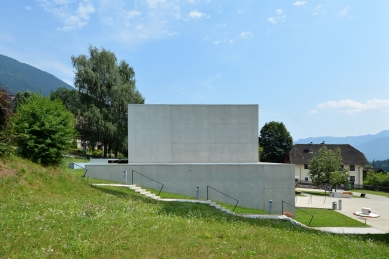
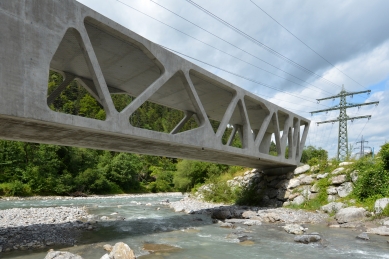
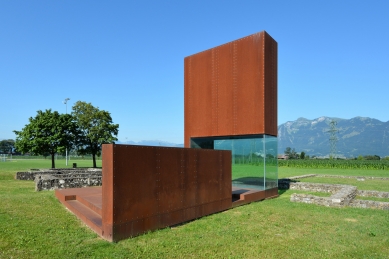
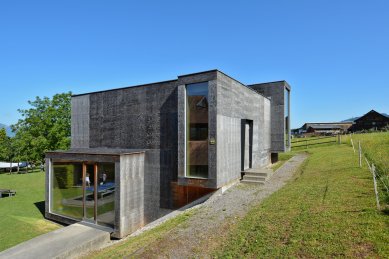
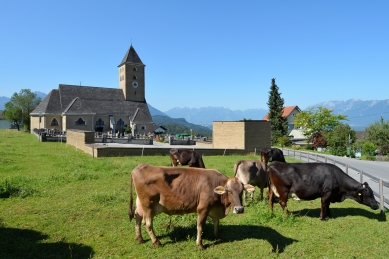
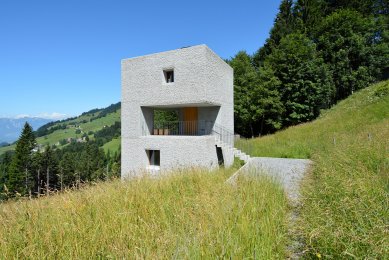
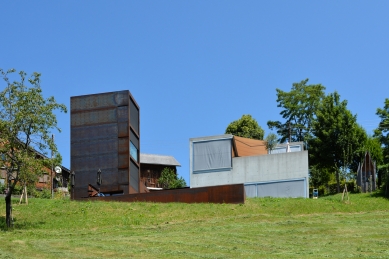
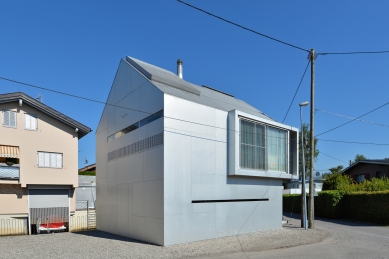
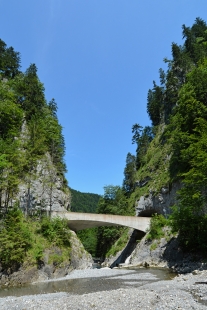
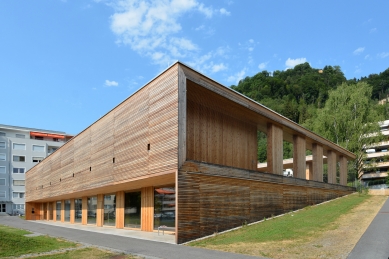
0 comments
add comment











